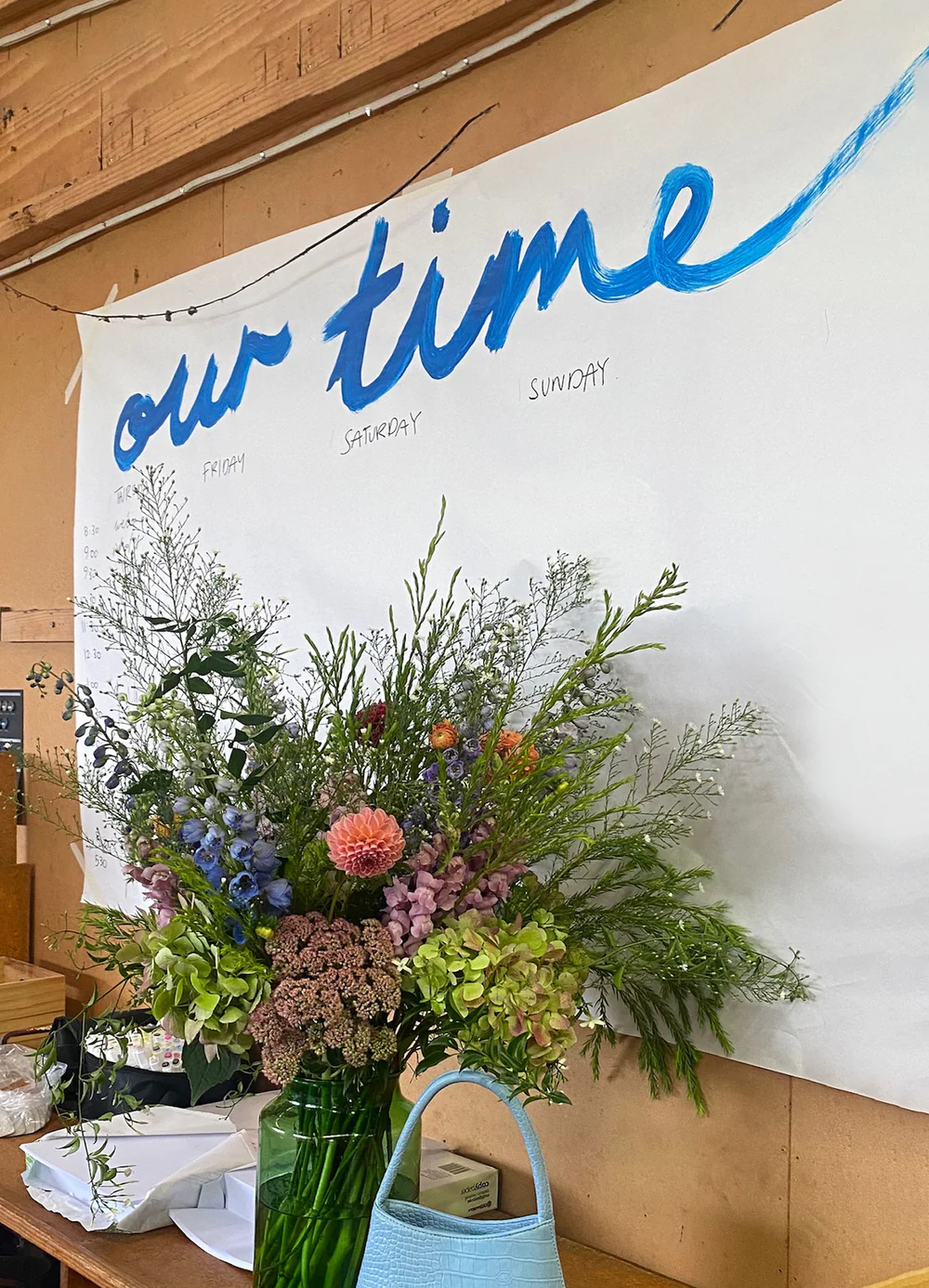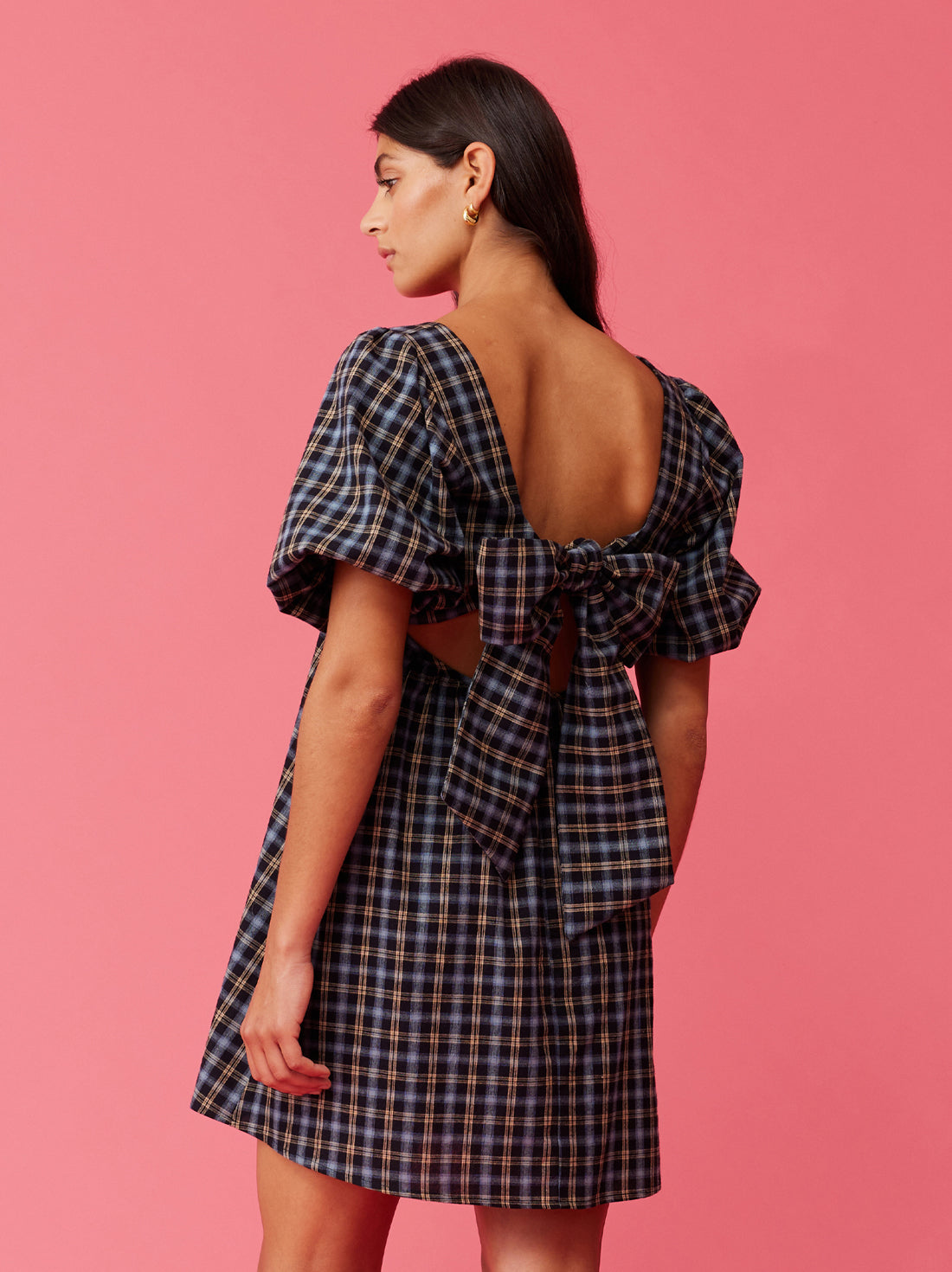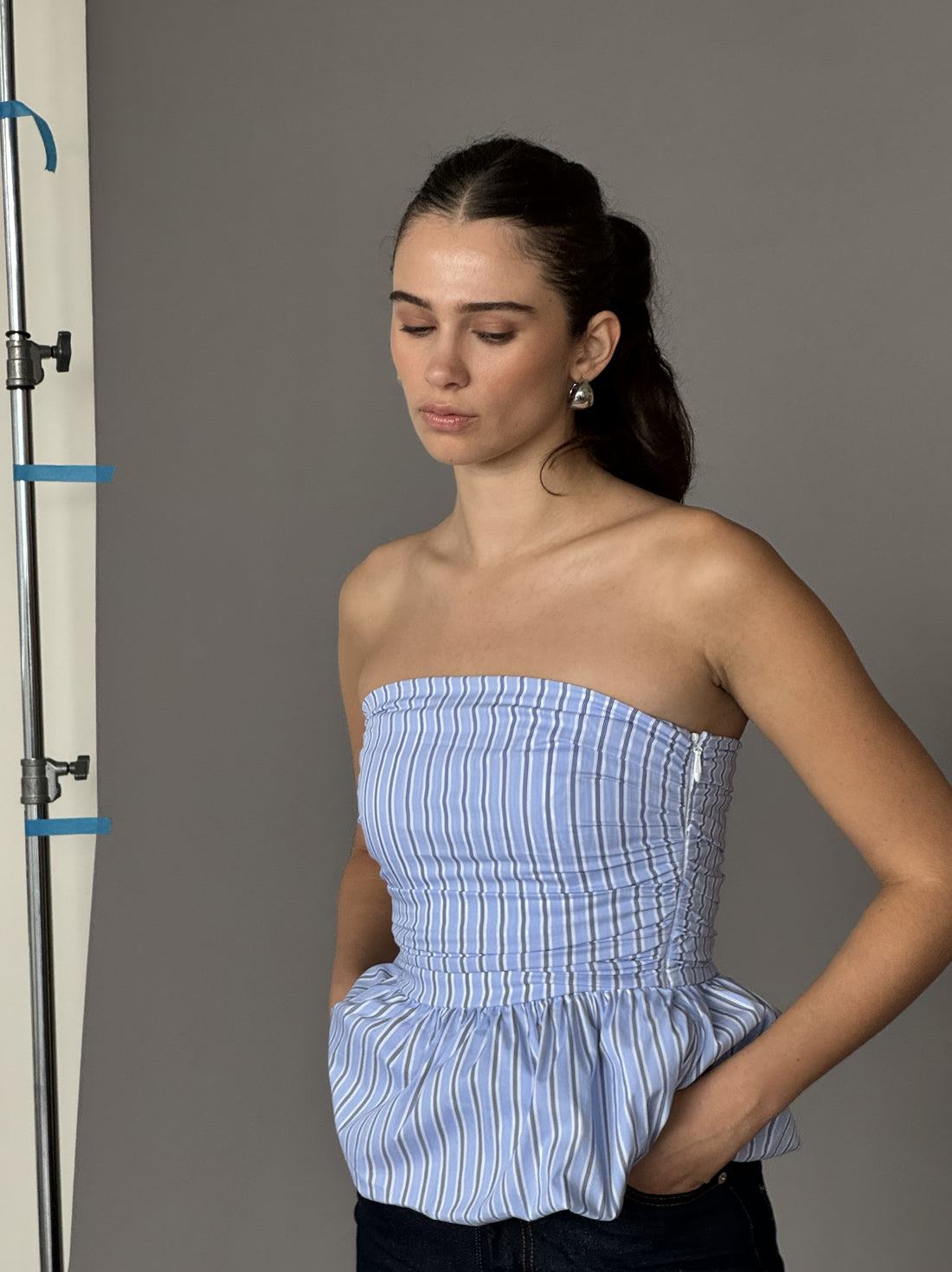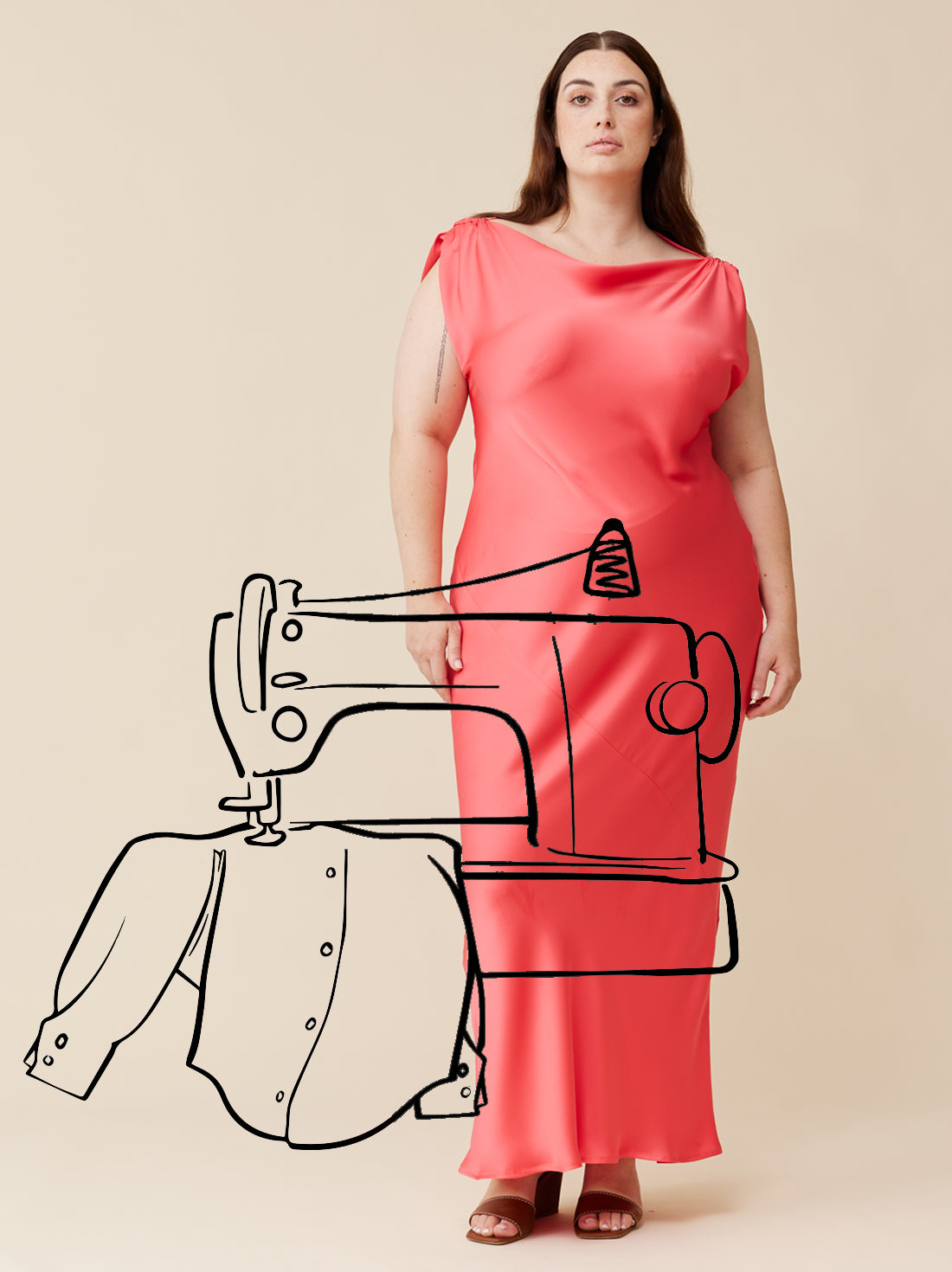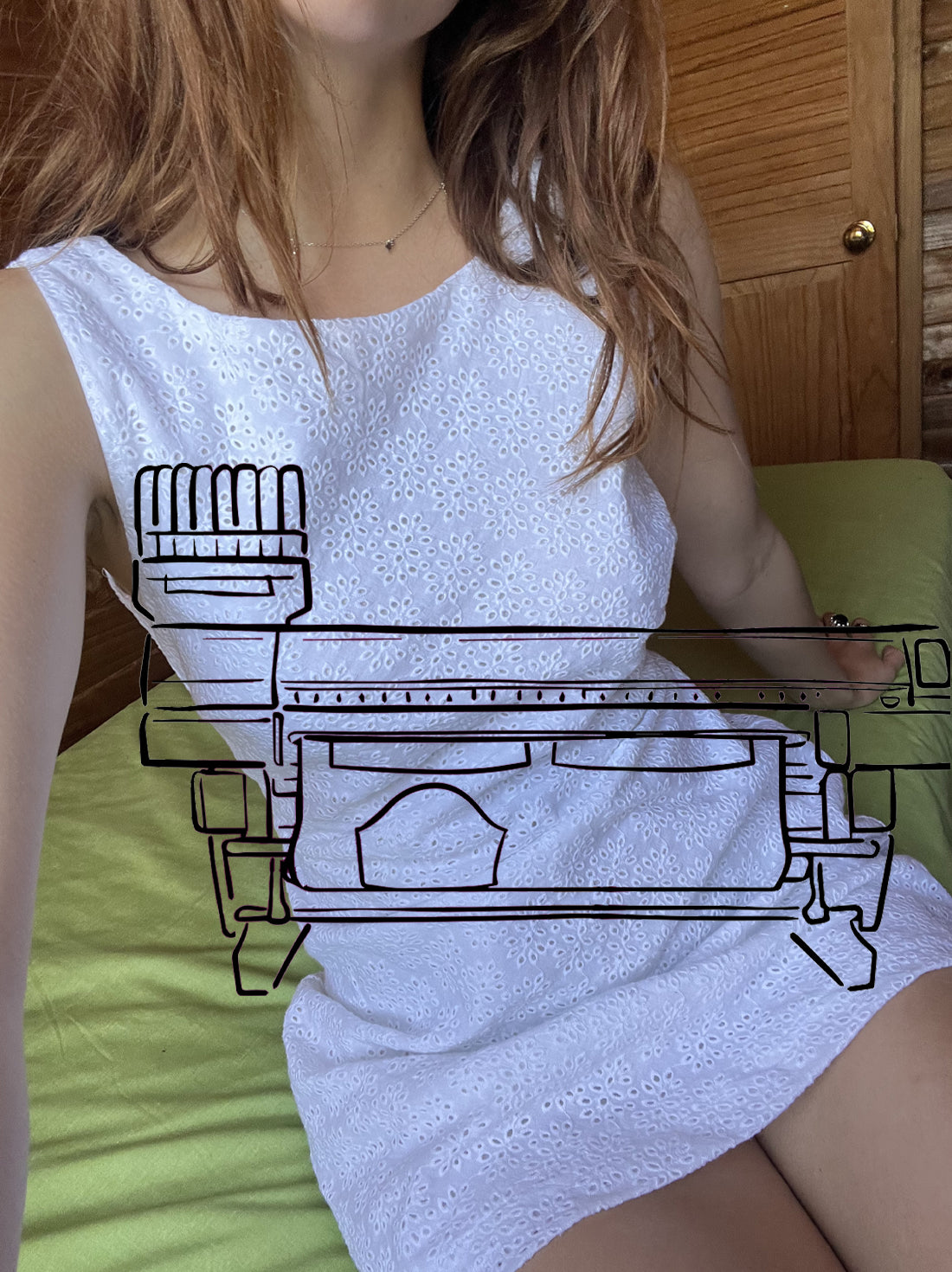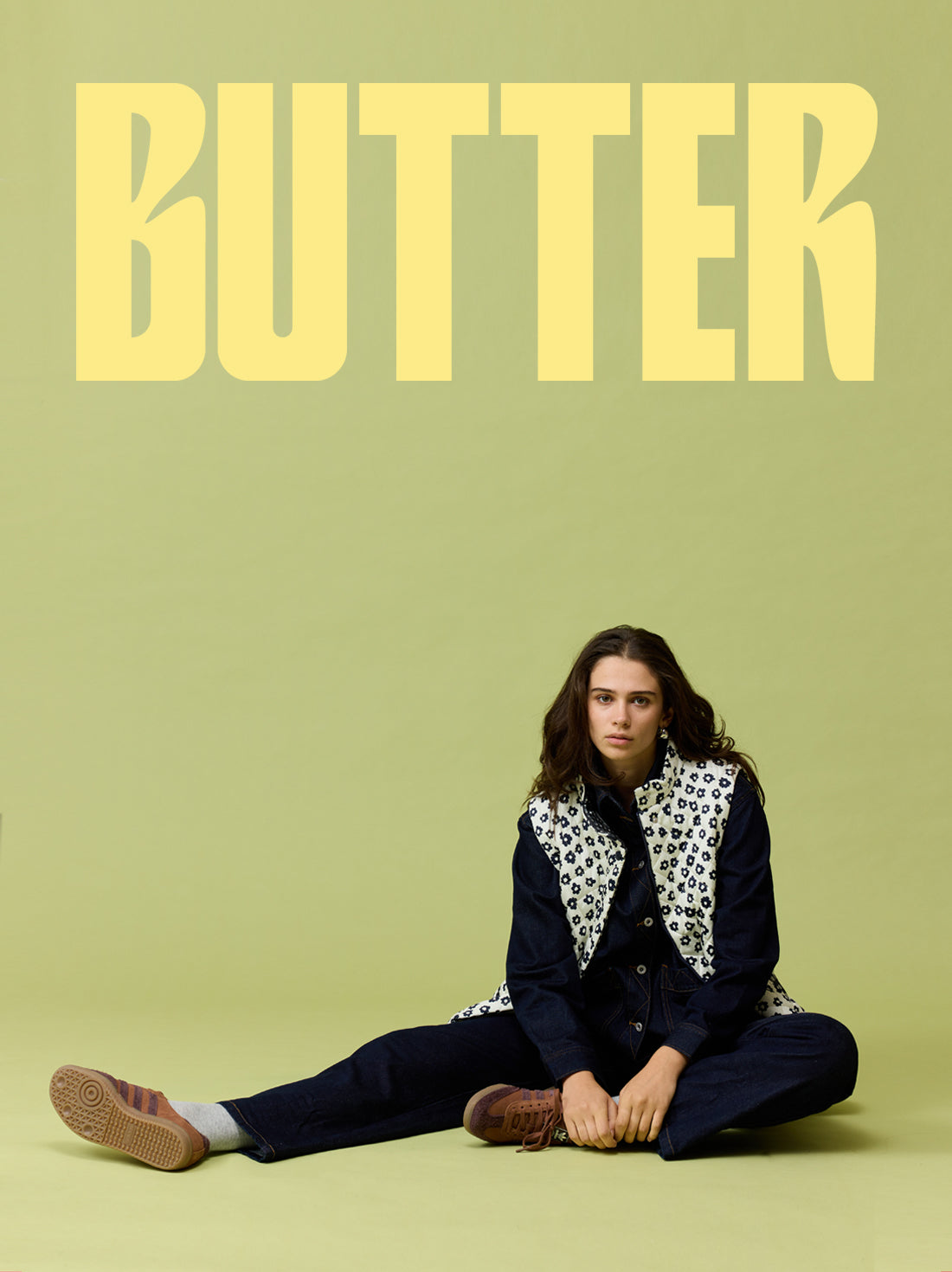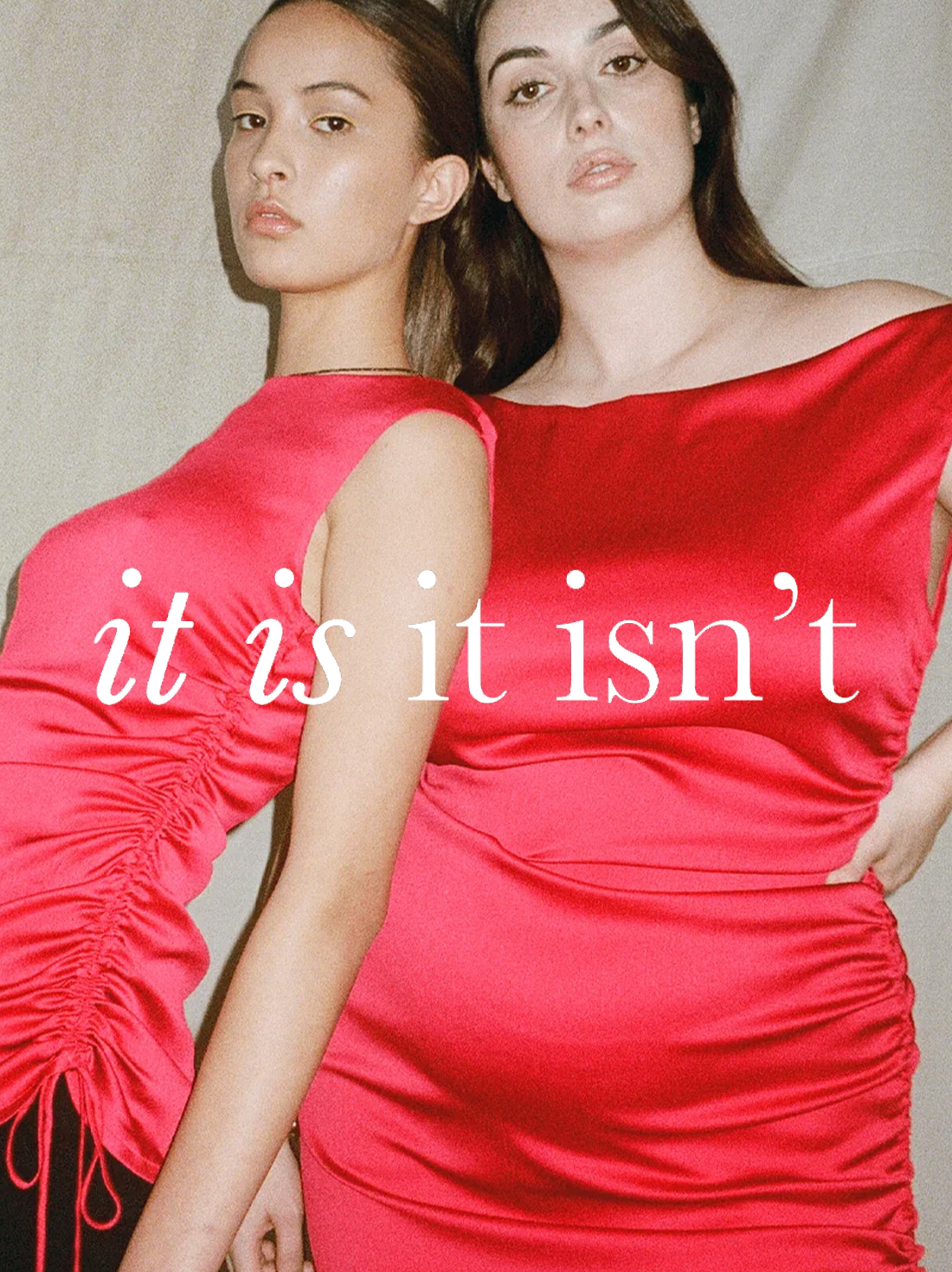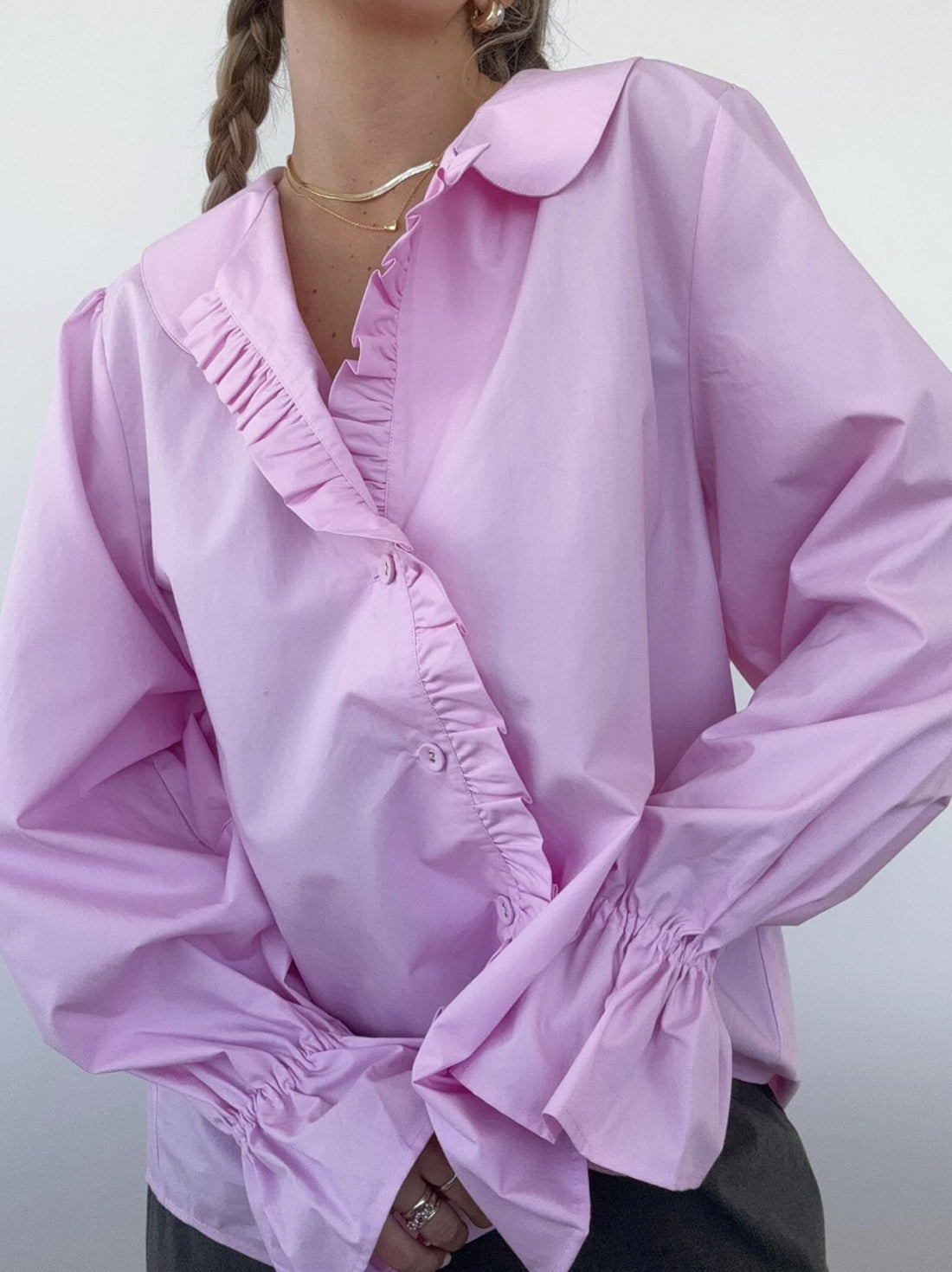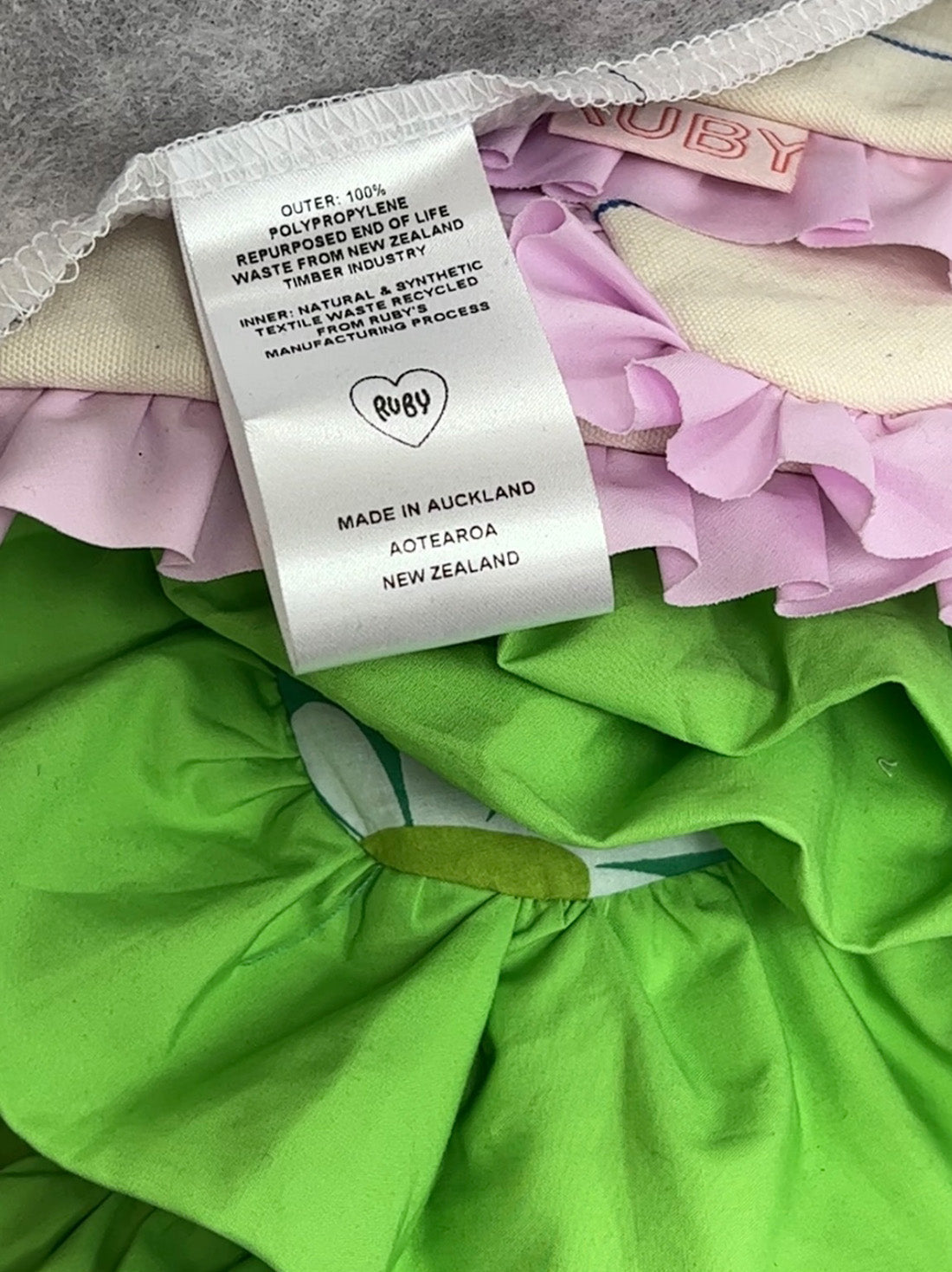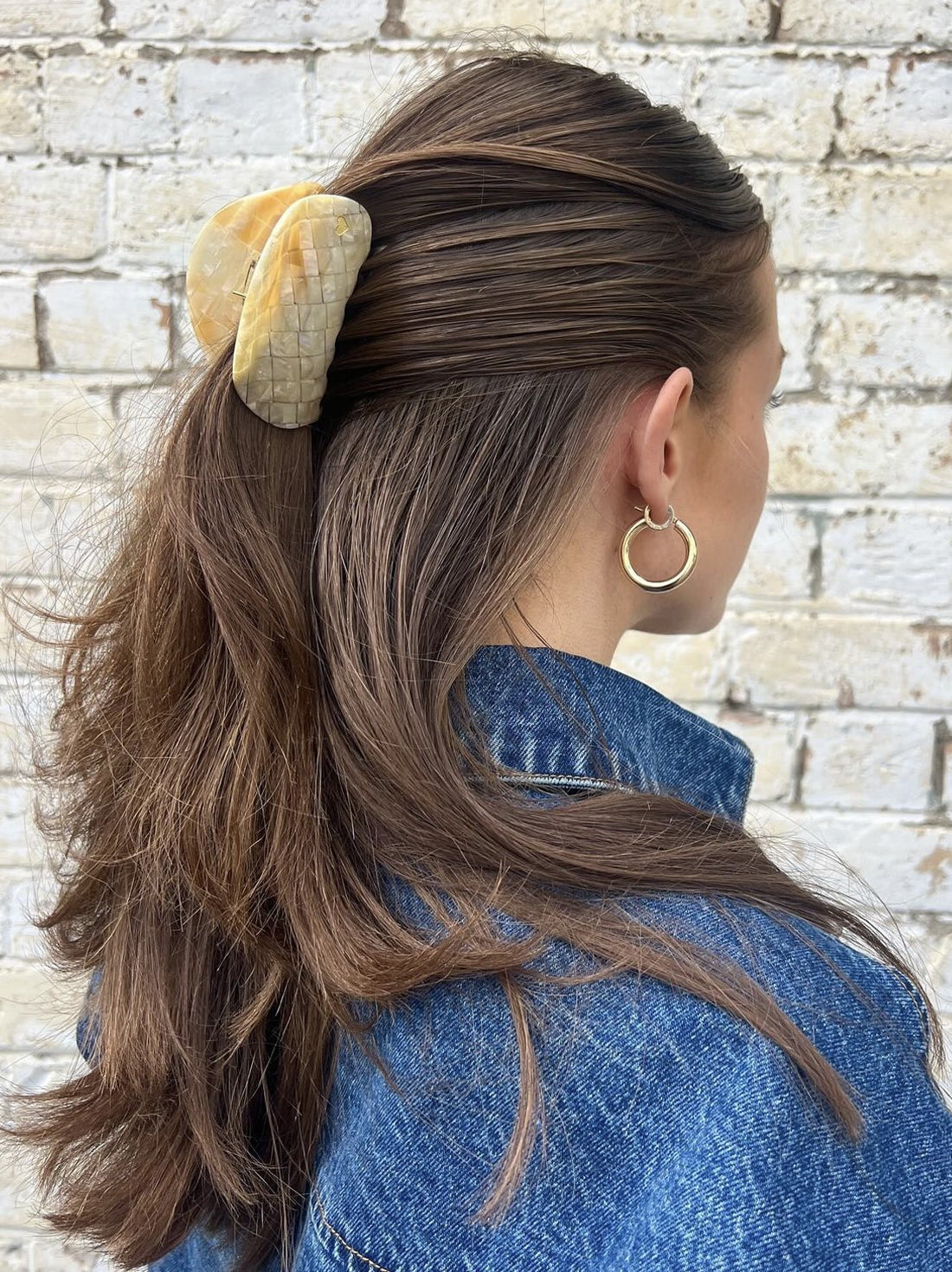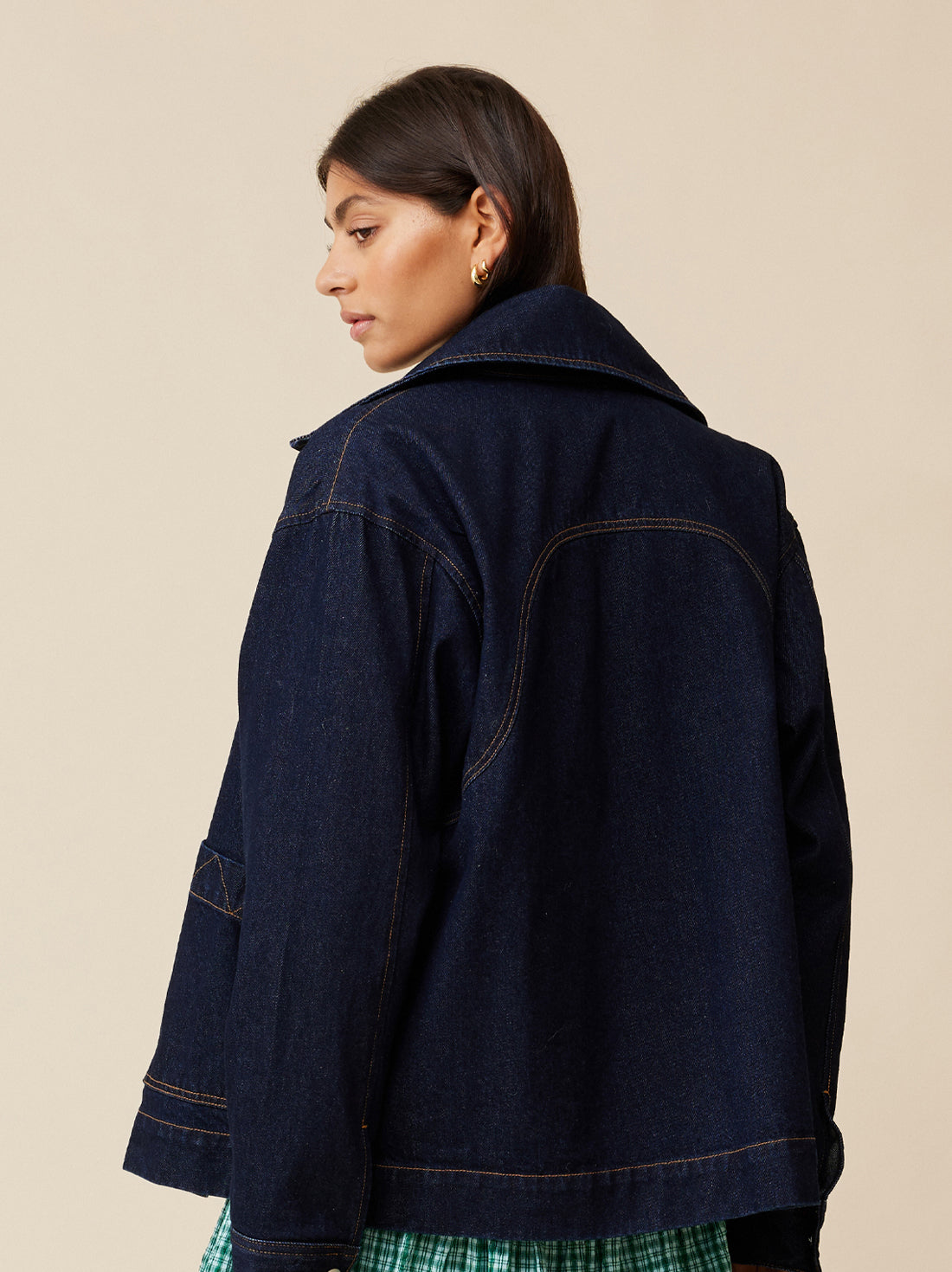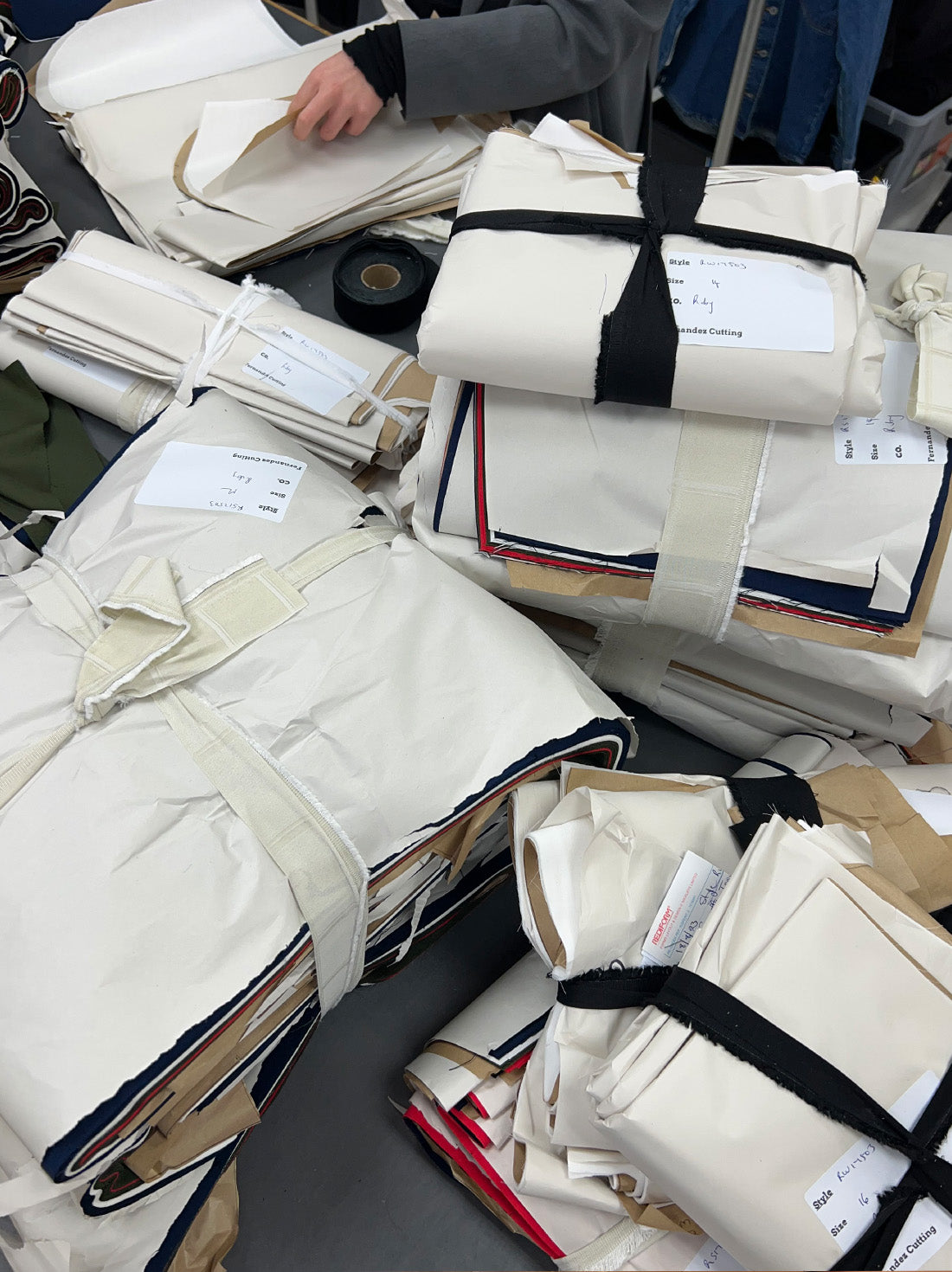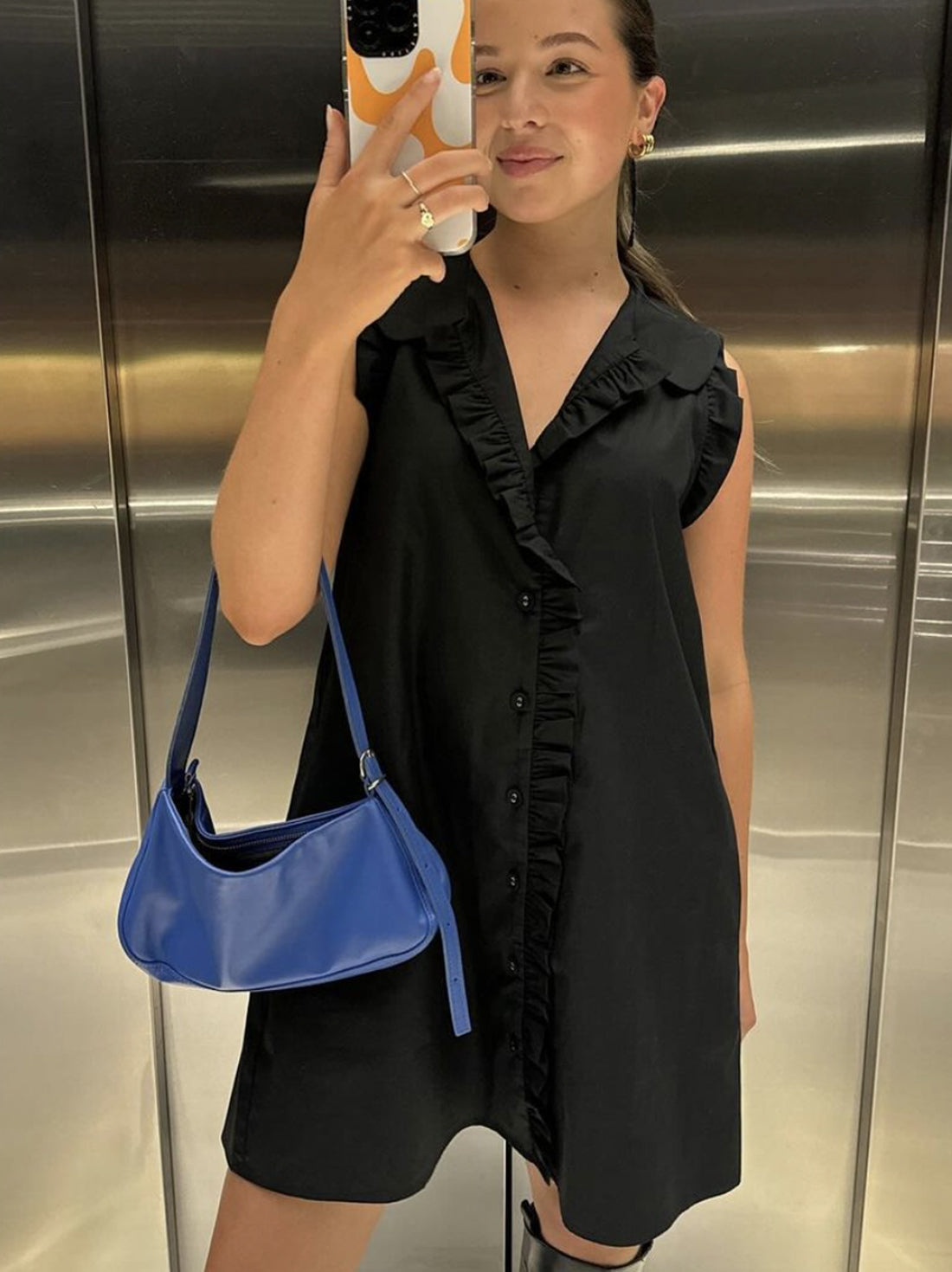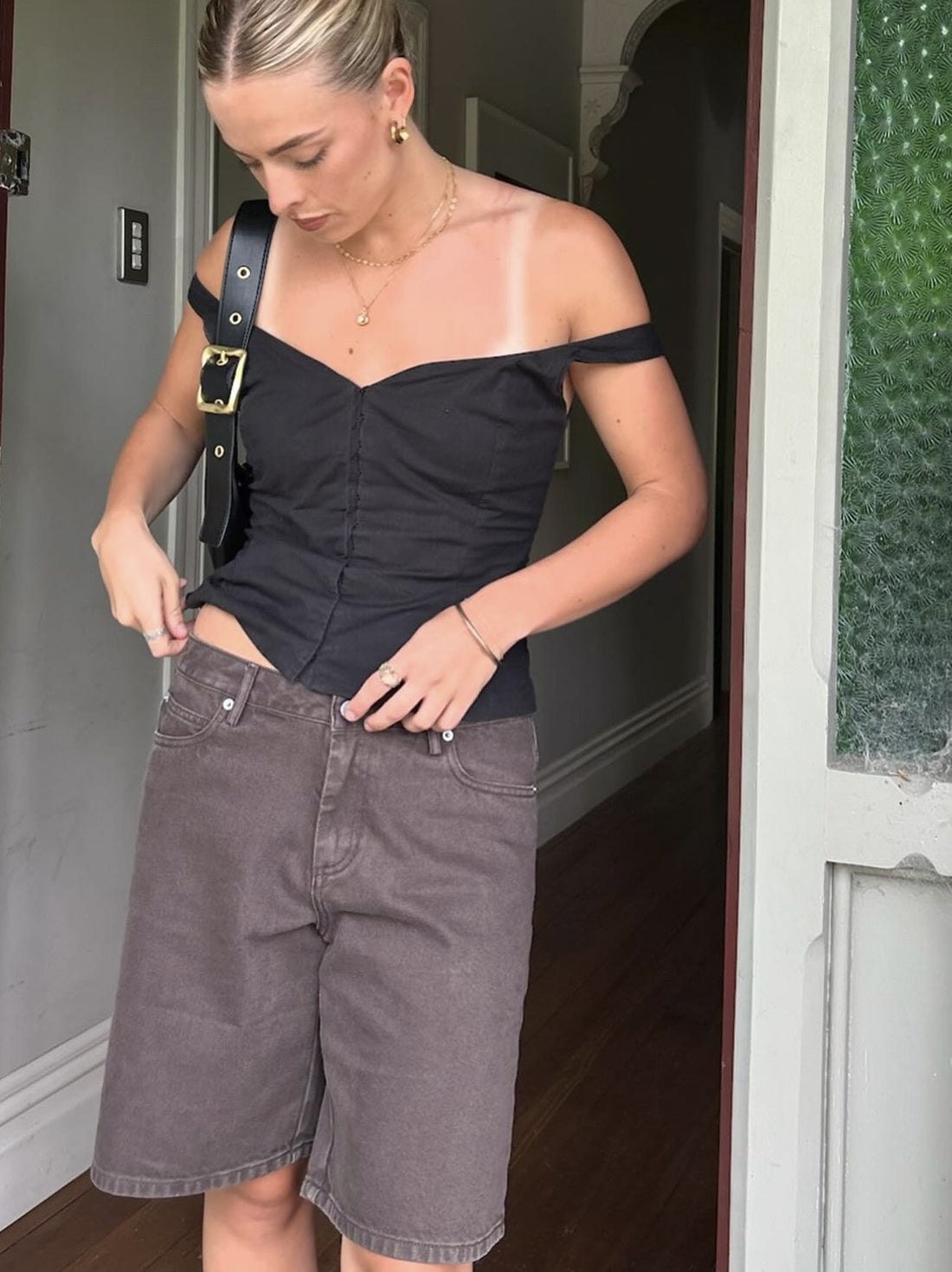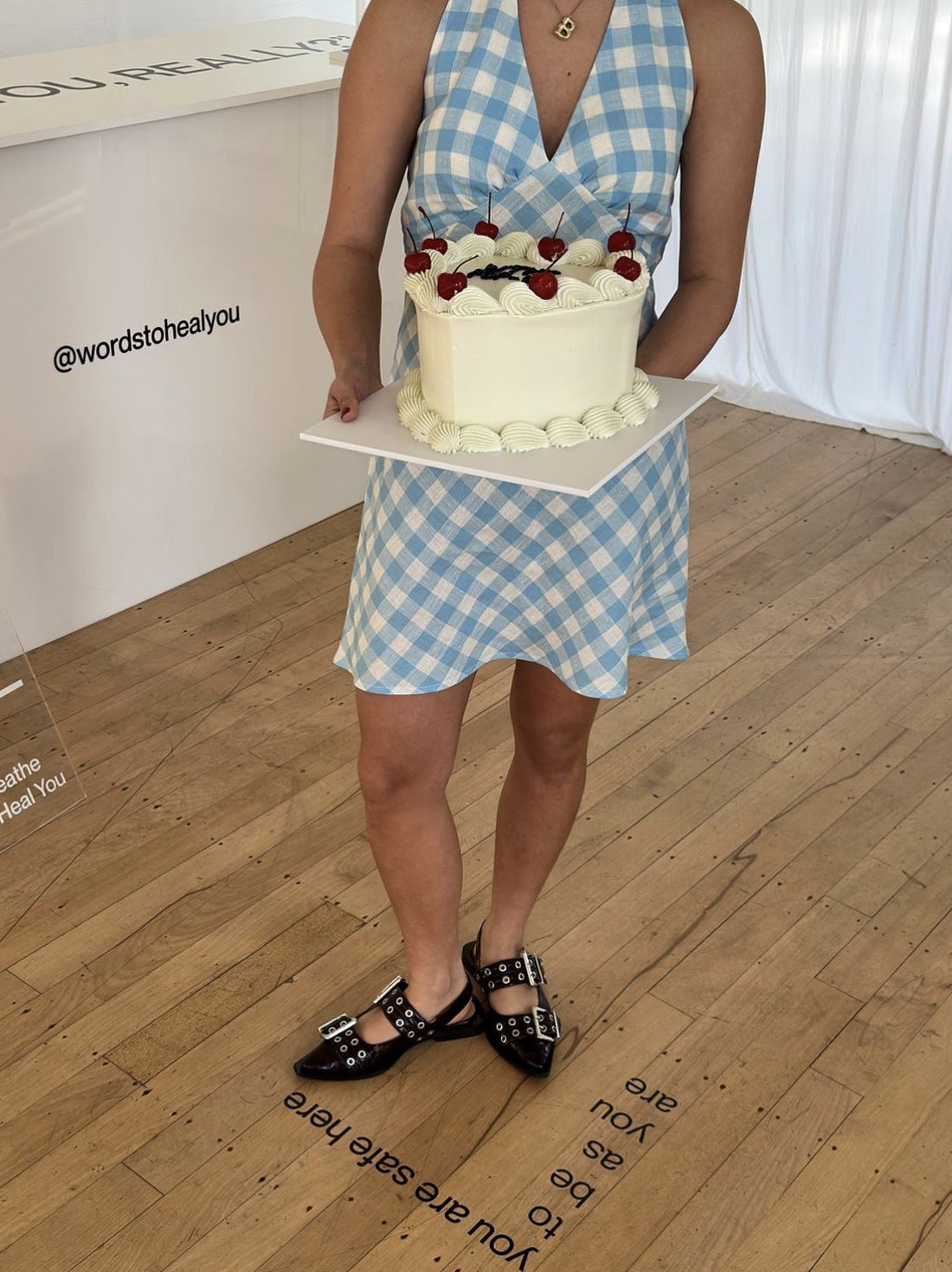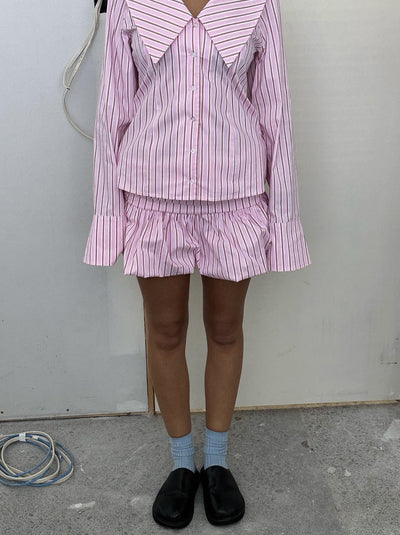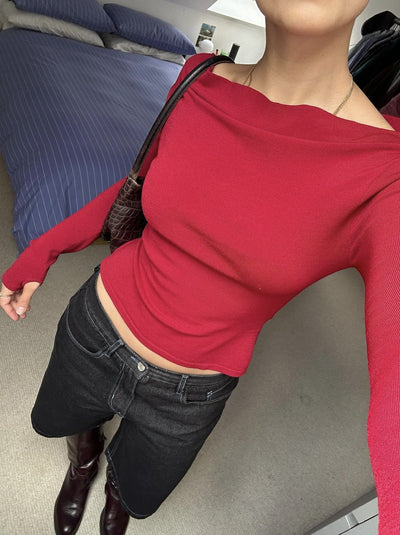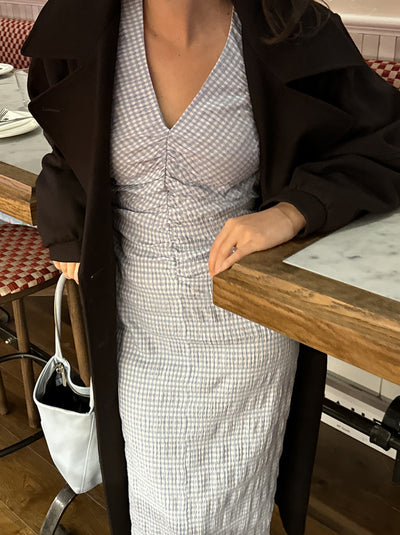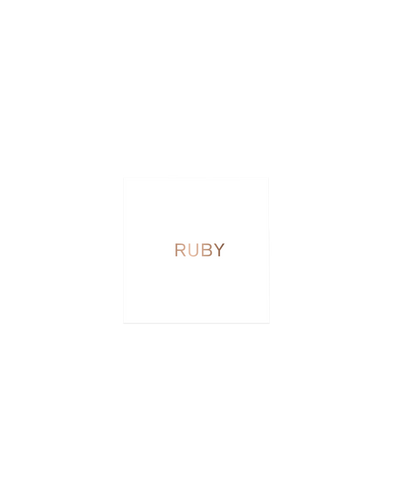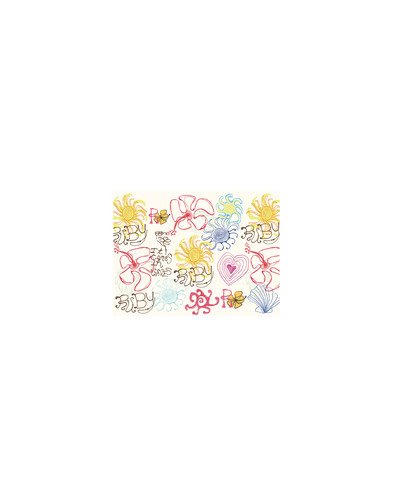Toolbox / Waste
Waste
The more we think about the normalisation of single (or under)-use anything, the more our minds teeter on the brink of collapse. How is it possible that THIS is where we have arrived? The materials we work with are precious. To make them, land, energy, water and chemicals are required. Skilled people are required. None of it, NONE should end up in landfill.

We are unlearning the take, make, dispose system of design, while also operating in a marketplace that rewards it. It is a balancing act, but really sitting in that uncomfortable space is where some inspiring projects have come from.
SO, yes, we’ve called this section “Waste”. It's the shorthand we all understand. But we need to change our attitude towards our precious resources. Nothing should be classified as waste. Excess materials always have a value, it’s a matter of taking the time to honour them, and find the best way to use them.
Anna-Lise, Deanna and Emily started connecting the dots of what’s wrong, and what’s possible, within our current system at a workshop run by Circularity in January 2020.
Significant investment is needed from central and local governments to ensure resources are fully utilised. There are lil’ glimmers of hope, for example conversations our team have had with Auckland Council’s waste planning team. We will continue to advocate for structural investment.
We know that finding or developing solutions to extend the life of garments, or to keep the materials in circulation rather than in landfill, does not address the problem of overconsumption in society. And at the same time, we control what we can control. You might notice the ZERO PRODUCTION WASTE classification on some of our garments. This means that during the cutting and sewing of that garment, no waste has gone to landfill. More detail on where the fabric off-cuts go is in the Our Progress section below.
OUR PROGRESS
RUBY OPERATIONS
In RUBY HQ and in our IRL stores, reducing the waste we send to landfill, and recycling and reusing materials is always front of mind.
We have a range of bins set up to ensure we make it easy for our team to sort the materials for the right end-purpose, for example composting food waste and end of life compostable packaging, packaging that we reuse, general curb-side recycling, soft plastic recycling, plastic hanger recycling and paper & card recycling or reuse. As a last resort we have a landfill bin for things that cannot be composted, recycled or reused. We also work with charity partners and IT recycling companies for reuse or repurposing. You can read more about our waste reduction work as part of our business operations in Carbon Curious section of our Toolbox.

EXCESS MATERIALS FROM OTHER INDUSTRIES
Turns out, one industry’s waste can be another industry’s treasure <3


In August 2022, we started printing Liam Patterns on waste paper from NZME’s print production of The New Zealand Herald.
We use on average 50-60 metres from each newsprint reel end that would otherwise be sent to recycling. With each reel end we can create approximately 18-20 patterns.
NZME sources its FSC certified* newsprint from Tasmania, Australia.
* FSC® A000522
A note: Liam Patterns that were printed before August 2022 are printed on paper made from waste materials that occur as a by-product of pine forest production in New Zealand.

EXCESS MATERIALS FROM OUR CMT PRODUCTION
When cutting garments from lengths of fabric, what typically is deemed as “waste” is created. You know that curve on the neckline of your t-shirt? There is an inverse curve that typically can’t be used. Different sizes in a production run take up different amounts of fabric. Parts of a roll of fabric might have little flaws like slubs of yarn or patchy dyeing. It’s an imperfect jigsaw puzzle.
We think carefully to reduce our yield and fabric consumption, and to minimise this waste. We add seams so that the pattern pieces can stack more efficiently, consider the width of the fabric when making a pattern and adjust the ratios we make in different sizes so that we can cut more efficiently. But the fact remains that when we make garments by cutting fabric and sewing it together, “waste” is created.
Our Auckland-based bulk production cutters and our in-house sample cutters separate all fabric off-cuts into fibre types, so that we can be sure to use these excess materials throughout different avenues and facilities, whether that be repurposing or recycling. Since 2019, we have not sent these excess materials to landfill. Prior to this, some of the excess fabrics from New Zealand CMT were sent to a business in Tauranga, New Zealand where they used our fabric to fill boxing bags.
REPURPOSING


During a training workshop in 2020 for people wanting to join the industry, or at early stages of their careers, Emily started cutting our excess fabric into strips and knitting them together with 2cm knitting needles. After trailing around strips of fabric to meetings, bed and dinner parties, something had to give. She put it out to the world that she was looking for a YOLO knitter, and was introduced to Geo Gregory of Geo Knits Slow (GKS).
Geo Knits Slow is a project that she has been working on for years, knitting beautiful pieces out of found materials such as bed sheets and vintage clothing. Via many Zoom sessions, and a few trips up to Auckland, Geo and Em collaborated on a collection of knit pieces that use the fabric off-cuts from the Liam Everything collection. We sold those pieces, and the knitting patterns in store.
Along with this we released knitting needles made in Tauranga, New Zealand from repurposed wood by ReMaker for customers to use to make their own pieces out of scrap fabric.


We make some of our fabric off-cuts and excess binding available to purchase. The off-cuts can be strip cut, knotted together to create yarn and then knitted together, however the binding is already pre-cut so this takes out the cutting work. The Liam x GKS patterns are a handy tool for creating garments and accessories OR you can sew the fabric off-cuts into something new of your creative choice.


In 2021 we introduced fabric off-cut boxes in our stores, which allows customers to take home RUBY fabric off-cuts, free of charge, to make their own small items. Alongside this we offer free downloadable Face Mask, Scrunchie, Bucket Hat, Lil Pouch and Book Bag patterns so customers can have all the components to make at home for free!


For larger excess materials or high wastage bulk cuts, we use this excess to make different sized scrunchies (and in the past face masks), creating a new accessory product for our Rubettes to purchase that complements our clothing in store. A full head to toe outfit! See our current scrunchies here


The ReCreators are a Social Enterprise based in Auckland, which promotes upcycling by learning to do it yourself (DIY) through community workshops. The collective supports collaborative learning, materials and support for sustainable creatives. The materials used are either discarded or off-cuts that would otherwise be destined for landfill.
“We feel they are beautiful and deserve a second chance on this planet.”
We have been collaborating with The ReCreators since 2020, donating off-cuts and bulk fabric ends for community workshops.
In 2022, we added different shaped pattern pieces into some of our bulk production cuts for the creation of poi and lei. This helped reduce our fabric wastage by 5-8%, and made the making process for the poi and lei easier as we could give The ReCreators cut circle pieces rather than these being hand cut one-by-one. With The ReCreators, we have cut and trialled 3 styles which were used in a Kapa Haka Festival and at Wesley Primary School.


We have a number of people reaching out to us who are interested in or are researching the realm of circular fashion design, production and waste. We encourage creativity, innovation and collaboration to further push the boundaries to find solutions. Got an idea? Get in touch!


We donate sampling fabric, leftover bulk fabric, fabric off-cuts and excess trims to community groups, schools and students who put these excess materials to use. Here are some recent examples:
- Creative Mending Circle
- Quilting Clubs
- Kindergartens
- High School students
- University students
RECYCLING
Once we have exhausted all possibilities to reduce, reuse and repurpose excess materials ourselves, we have partners that use them to create products for other industries.


Textile Products are a textile recycling company based in Auckland, New Zealand. Their recycling technology is used predominantly to recycle wool and natural products.
We send our natural fibres to Textile Products who have large machines that shred the fabrics down. They are then teased and turned into a variety of products including carpet underlay, insulation, weed mats, felt blankets, and furnishing fillers.


Upparel's non-chemical process uses excess or used textile and garments, and converts them into new profitable products, reducing excess materials from entering landfill. “Waste isn’t waste – it’s a resource!”
We have partnered with Upparel materials that cannot be made into other products or reused through our ‘reduction’ initiatives. This is converted into products such as cushions, furniture and jacket filler, insulation, acoustic panelling, rubber panelling and floorings in buildings.
Dealing with our excess materials in this way incurs a greater cost than if we were to send it straight to landfill. To give you an idea, it costs us $2.25/kg to do this, rather than roughly $0.80/kg if it went straight to landfill. As of July 2022, we converted 3,241kg of textile waste from landfill through Upparel, totalling $7,292.25. But we are committed to ensuring that we send the least amount of useful resources to landfill, so will keep working to reduce excess materials from our manufacturing, and looking for ways to repurpose and recycle excess materials.

Extending Life
It might be the end of your relationship, but that beautiful piece will be loved by someone else <3


Launched in 2021, @rubysaysrecycle is the home of samples and seconds that we make available for our Rubettes to purchase. For each style we put into store, anywhere between 2 to 5 samples may be made to ensure we get the fit and vibe just right, alongside this, there’s many samples made that for whatever reason, don't make it into store. It didn’t seem right for these pieces to not find a home so we list them on Instagram at the end of each season. We’re excited to see just how much you all (our beloved Rubettes!) love @rubysaysrecycle and look forward to building on this platform more in the coming years as we know re-selling a product can reduce the associated greenhouse gas emissions for that sale by anywhere from 43 to 82 percent.


Recognising nothing is ever perfect in this world, RUBY Upside Down celebrates the pieces that we’ve put a lot of love & care into, but somewhere in our production process a flaw or fault has occurred. We know these pieces are perfectly imperfect & can find a home with one of our Rubettes at a reduced price, with its quirk listed online. Prior to Upside Down’s launch in 2021, we would have often donated these pieces or kept them stored for a final season sale, so we love that Upside Down extends the value of these perfectly imperfect treasures.


We piloted a test of our RUBY Matchmaker service from June 2020 - August 2022 which was extremely successful. Matchmaker is an online portal for our customers to tell us what previous season pieces they are looking for or looking to sell. This allowed us on the backend to match up the seller and buyer to exchange the item, encouraging our customers to re-sell their pre-loved garments, to keep them out of landfill. Moving into 2023 we are working on a permanent platform for our Matchmaker service.


Since October 2017, RUBY has partnered with rental destination The Dress Room to make favourite RUBY and Liam styles available for short term rental, a great option for event dressing. We see our partnership with The Dress Room as another small step helping to extend one garment’s life and supporting our overall circularity journey, developing a culture where we use products, rather than own them. At the end of a rental garment’s rental life, we resell through RUBY Upside Down.


We hold ad hoc RUBY Repair events in store and promote them via social media. On these days, bring in your RUBY or liam clothes (from any season, no matter how old), and our in-house machinist will be ready to mend and/or hem your favourite pieces while you shop. We will also repair your RUBY pieces if they have a manufacturing fault.


Clothing & accessories that are not in a condition to be sold but are still beautiful to wear, for example test samples, or pieces that have slight faults, are donated to charities such as Womens Refuge, Dress for Success, The Gattung Foundation, and Rainbow Youth,


Our swing tags are made of recycled paper, helping to reduce our reliance on natural virgin resources. The string is made of waxed cotton, meaning the swing ticket can be composted after use (just remove the little safety pin). Alternatively, if your swing tag is in good condition, bring it to our IRL stores or RUBY HQ and we will put these back into circulation so we can use them again.
New swing tags cost around $0.65, and we have a staff initiative to collect swing tags from our team’s RUBY pieces. We hold a team lunch to the value of the swing tags we can reuse.

End Of Life
It is our job to make sure that you are able to love and wear our pieces for a long time. Our in-house sample machinist or one of our Auckland CMT Factory Partners repairs faulty garments. In addition, see here for our top tips on caring for your pieces, and see here for options you have to on-sell your pieces.
There may come a time where your garment is no longer fit for wear, cannot be re-sold, passed along to friends & family or donated to charities. In our Materials Index, we outline by fibre type what is currently available to us at the end of life. We are aware however that many of these processes are likely not available to you in your own homes, so below we have highlighted what you can do.


We take your RUBY and Liam pieces back to recycle or repurpose on your behalf - free of charge. Just drop into our IRL stores or send back to RUBY online. Depending on what the textile type is, we will send it to one of our partners such as Upparel to be processed into something else of value.
When garments are sent away for recycling, the hardware and trims on the garments are usually removed so that the garments can be broken down through machinery easily.
Items that we can take back for recycling:
- Clothing
- Hats and Scarves
- Shoes
- Belts
- Towels


Little Yellow Bird (LYB) takes back any 100% natural fibre clothing (from any brand) that has reached the end of its life. You can also send these directly to LYB. Just follow the instructions on their website.


The plastic hangers that we use for transporting and storing garments are made from a combination of virgin and recycled plastics, and we use them multiple times. When the hangers break, we collect them and send them back to the manufacturer in Hamilton, New Zealand. They are then broken down and turned into new plastic hangers.
OUR CHALLENGES
Honestly, it's maintaining resilience and determination.
Designing out waste: Bias cut dresses give a beautiful fit, but they create more wastage than straight cut styles as they are cut diagonally on the fabric, which means we can be left with big unused triangle pieces. Reducing this wastage during the development process takes time and creativity to think outside of the box.
SPACE: Sorting, transport and storage of excess materials from New Zealand CMT production requires a LOT of space, and once again time from our cutter and our development and production teams. However, we feel this is now a requirement of doing business so it is an imperative part of the process.
Infrastructure: Repurposing and recycling excess materials from production is a new area for New Zealand, and so the technology and infrastructure is limited as to what products our excess materials can be repurposed into locally. We want to keep these materials in New Zealand as sending them to Europe or Australia creates carbon emissions.
Excess materials from China-based CMT production: Currently most of our Factory Partners recycle cut & sew off-cuts instead of sending to landfill. But this process is not verified or certified and we don't know exactly what is being created from this recycling process. From discussions with Factory Partners, there are surprisingly not many recycling programmes for textiles in their regions. Most of this is happening in countries like Sweden and Finland but this isn't a final solution for us as it requires transport which creates emissions to send ‘waste’ all the way from China to Europe.
Our Plan
- 1
Keep building on all of the above, obviously.
- 2
Push push push for greater investment in New Zealand-based materials repurposing programmes.
- 3
Investigate China-based textile recycling programmes.
- 4
Collaborate with people outside of our business who have different skills and technology.
Want to chat about waste?
If you have any ideas to pitch at us or you would like to collaborate - get in touch.
Product
The work and care we put into our product so that each piece is loved for a long time and by many.
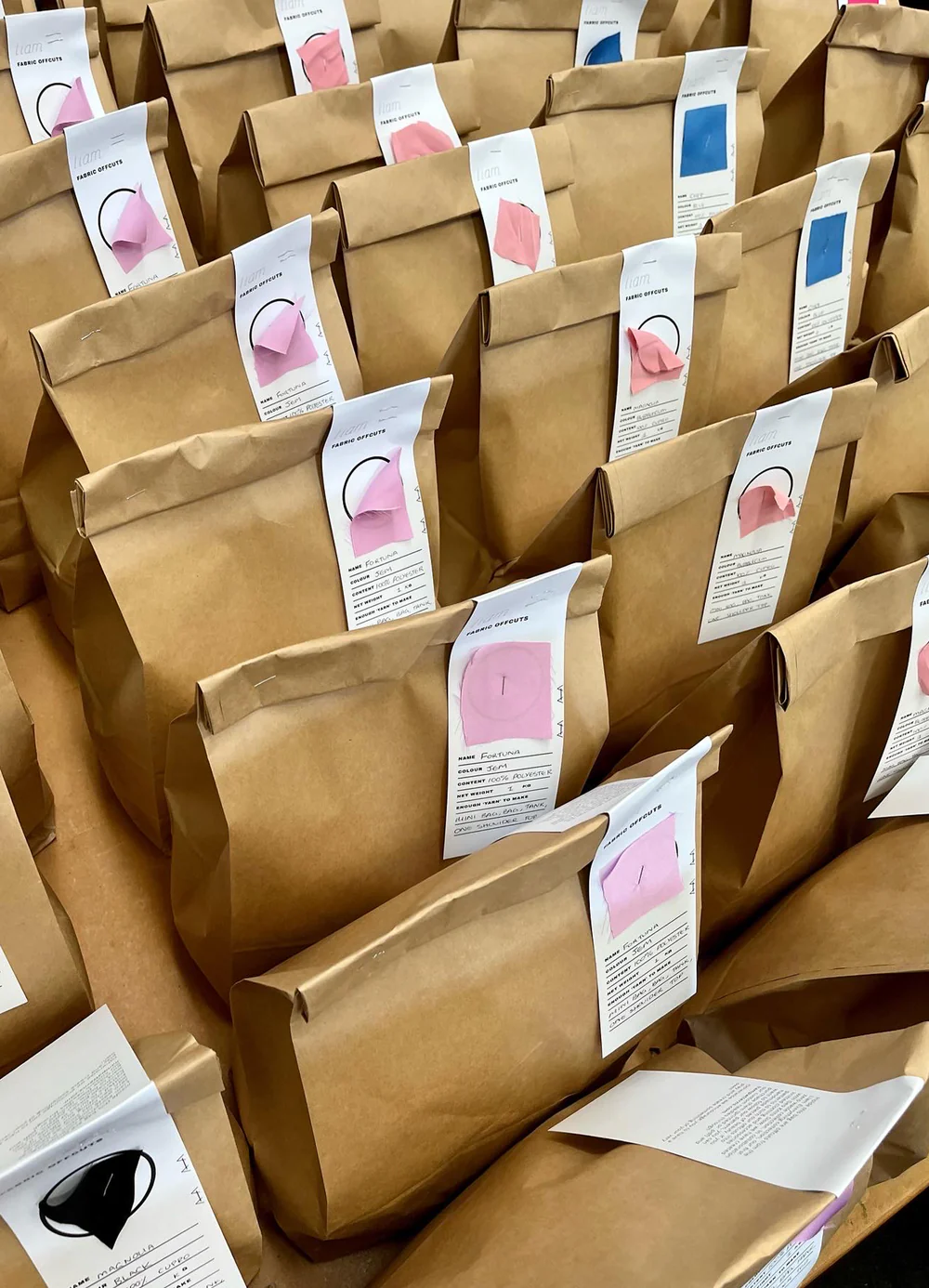
Community
We believe in strengthening & educating our local community whether that be those in our team, Rubettes that frequent our stores or those we haven’t met yet.
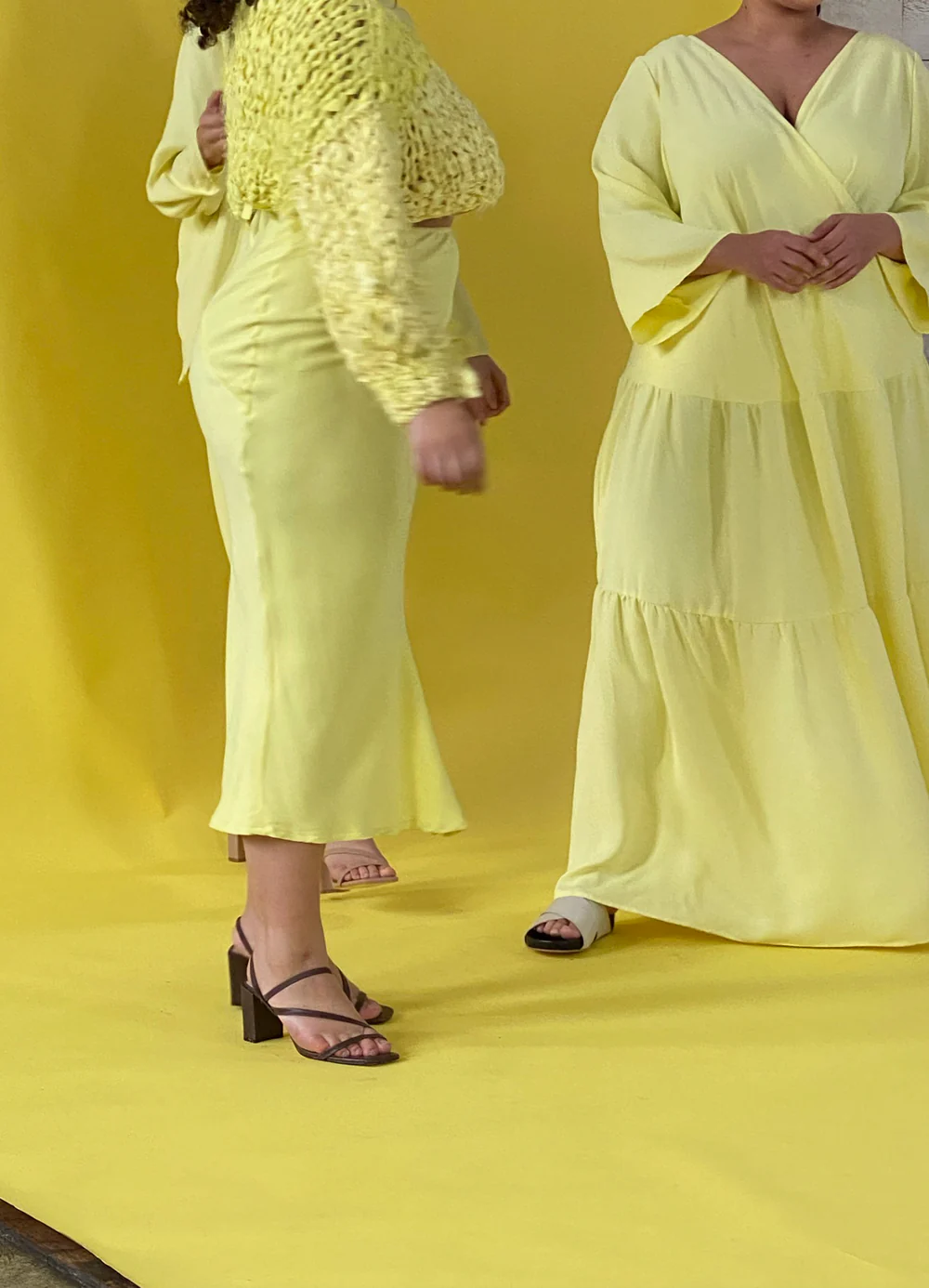
Carbon Curious
Insights into our carbon footprint and the plan to reduce our emissions.
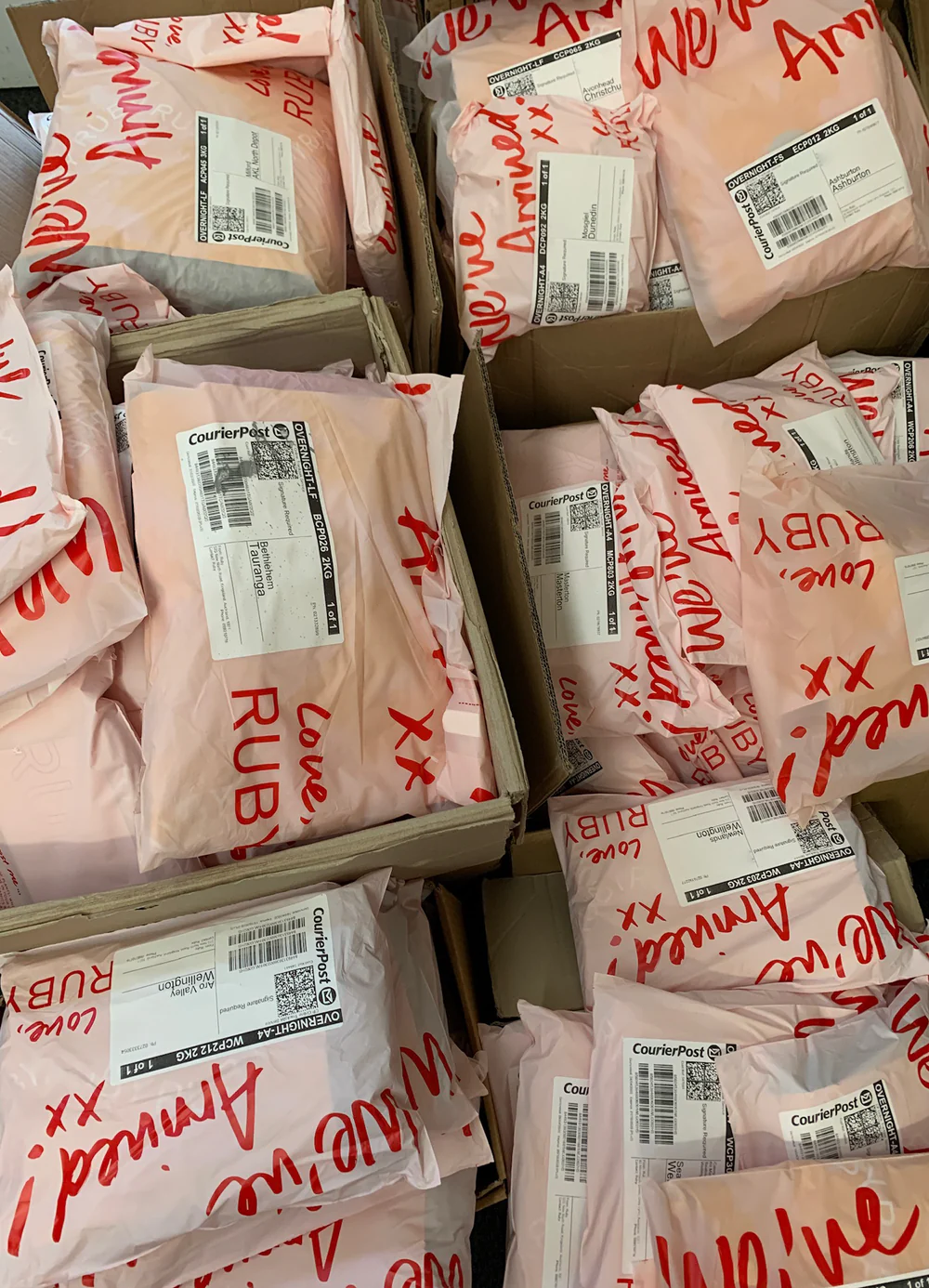
Product
Community
Carbon Curious
Education
Product

Community

Carbon Curious

Education
